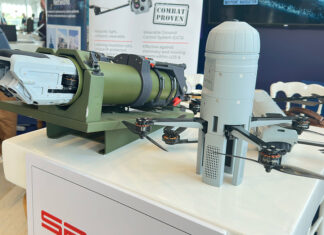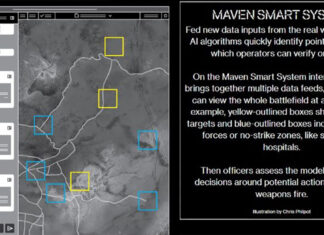

Scientists at the U.S. Army Edgewood Chemical Biological Centre (ECBC) at Aberdeen Proving Ground assisted by the original equipment manufacturer (OEM) Smith Detection, demonstrated recently how a standard chemical agent detector can be hacked into an explosive material detection sensor.
The modified device can already detect roughly a dozen compounds including TNT, RDX and EGN. Future efforts could increase the number of detectable compounds.
In service with the US military for 25 years, Joint Chemical Agent Detector (JCAD) was originally designed as a portable, automatic chemical warfare agent detector. Currently there are approximately 56,000 chemical warfare agent detecting JCADs in service within the Department of Defense. Recent needs have required the Army to find ways to create a similar sensor capable to detect explosive materials which include various types of explosive ordnance, improvised explosive devices and improvised/homemade explosives.
To convert an ordinary JCAD into a JCAD Chemical Explosive Detector, or JCAD CED, the existing rain cap is replaced with one with a new inlet. Once in place, scientists wipe any surface using the probe swab, which then retracts back into inlet. With a simple button push, the probe swab tip with the explosives sample heats up to a certain temperature, vaporizing the explosive residue. These additional features allow an ordinary JCAD to now have the role of a portable, automated explosives detector.
Developed under an Army Technology Objective (ATO) since 2010, Army scientists have looked for ways to exploit the 56,000 JCADs deployed in the field to provide explosive detection in addition to their chemical agent detection role. The program starting in 2010, under the requirement to assess which existing detectors could also detect explosives, ECBC’s Point Detection Branch began to research different options.
How its done?
Towards this capability demonstration the developers had to overcome significant challenges – for example, the original JCAD is designed to detect vapours. However, explosive materials are usually low vapor pressure solids. ECBC scientists had to figure out how the JCAD could detect solid explosive materials, without changing the hardware or original intent of the detector. Given these parameters the scientists sought to determine how to modify this detector while essentially keeping it the same.
“Many of the emerging chemical threats and explosives share the challenge of presenting little to no detectable vapor for sampling. By conducting research into the detection of solid explosive residues, we have learned valuable lessons that are equally important for detecting nonvolatile solid and liquid chemical agent residues as well,” said Dr. Augustus W. Fountain III, senior research scientist for chemistry.
The add-on pieces are a new JCAD Rain Cap with a Probe Swab and an inlet. Within the JCAD itself, scientists added two on-demand vapor generators: a calibrant and a dopant. The dopant changes the chemistry of the detector so that it can detect explosives easier.
“Within the Army, there is no other automatic, near real-time explosives detector at this time. There are many explosives detectors, but not ones that are dual-use and automatic,” said Charles Harden, Ph.D., a Leidos contractor with ECBC’s Point Detection Branch. “The best part is that the technology is already out in the field, and warfighters have been trained on this equipment,” Harden said. “All we’re doing is introducing small add-ons that will have a big impact.”
“There are several advantages with the improved JCAD CED system. First, its dual-functionality accurately detects vapors as well as explosive residue. Second, scientists successfully modified the system with easy-to-use add-ons, and the upgrade is cost effective and reduces the need for yearly maintenance,” said Blethen.
Scientists plan to determine the amount of explosives that can be detected and develop a concept of operations. Other goals include developing a methodology for detecting homemade explosives, and reaching a technology readiness level 6. JCAD CED will be demonstrated in a fiscal year 2015 military utility assessment.



















